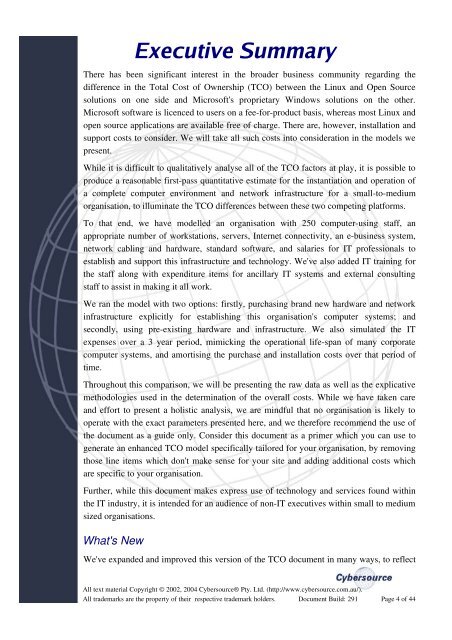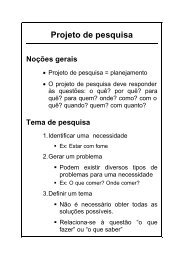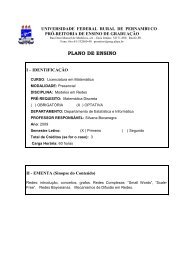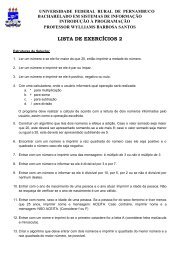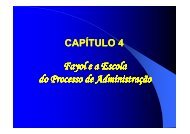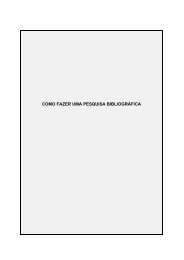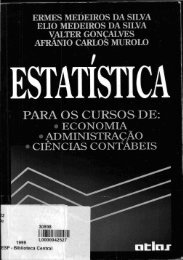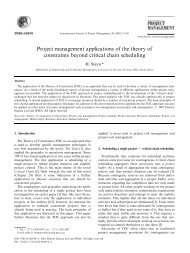Linux vs. Microsoft TCO Comparison
Linux vs. Microsoft TCO Comparison
Linux vs. Microsoft TCO Comparison
You also want an ePaper? Increase the reach of your titles
YUMPU automatically turns print PDFs into web optimized ePapers that Google loves.
Executive SummaryThere has been significant interest in the broader business community regarding thedifference in the Total Cost of Ownership (<strong>TCO</strong>) between the <strong>Linux</strong> and Open Sourcesolutions on one side and <strong>Microsoft</strong>'s proprietary Windows solutions on the other.<strong>Microsoft</strong> software is licenced to users on a fee-for-product basis, whereas most <strong>Linux</strong> andopen source applications are available free of charge. There are, however, installation andsupport costs to consider. We will take all such costs into consideration in the models wepresent.While it is difficult to qualitatively analyse all of the <strong>TCO</strong> factors at play, it is possible toproduce a reasonable first-pass quantitative estimate for the instantiation and operation ofa complete computer environment and network infrastructure for a small-to-mediumorganisation, to illuminate the <strong>TCO</strong> differences between these two competing platforms.To that end, we have modelled an organisation with 250 computer-using staff, anappropriate number of workstations, servers, Internet connectivity, an e-business system,network cabling and hardware, standard software, and salaries for IT professionals toestablish and support this infrastructure and technology. We've also added IT training forthe staff along with expenditure items for ancillary IT systems and external consultingstaff to assist in making it all work.We ran the model with two options: firstly, purchasing brand new hardware and networkinfrastructure explicitly for establishing this organisation's computer systems; andsecondly, using pre-existing hardware and infrastructure. We also simulated the ITexpenses over a 3 year period, mimicking the operational life-span of many corporatecomputer systems, and amortising the purchase and installation costs over that period oftime.Throughout this comparison, we will be presenting the raw data as well as the explicativemethodologies used in the determination of the overall costs. While we have taken careand effort to present a holistic analysis, we are mindful that no organisation is likely tooperate with the exact parameters presented here, and we therefore recommend the use ofthe document as a guide only. Consider this document as a primer which you can use togenerate an enhanced <strong>TCO</strong> model specifically tailored for your organisation, by removingthose line items which don't make sense for your site and adding additional costs whichare specific to your organisation.Further, while this document makes express use of technology and services found withinthe IT industry, it is intended for an audience of non-IT executives within small to mediumsized organisations.What's NewWe've expanded and improved this version of the <strong>TCO</strong> document in many ways, to reflectAll text material Copyright © 2002, 2004 Cybersource® Pty. Ltd. (http://www.cybersource.com.au/).All trademarks are the property of their respective trademark holders. Document Build: 291 Page 4 of 44


